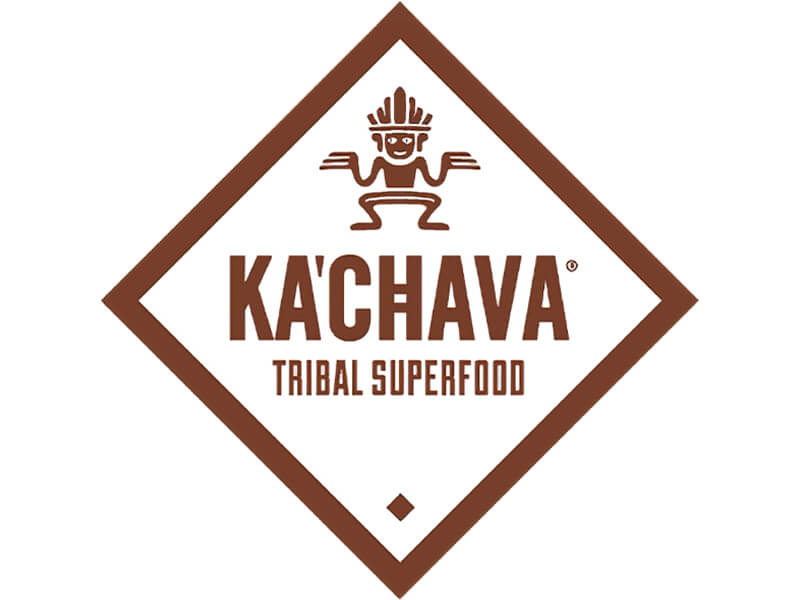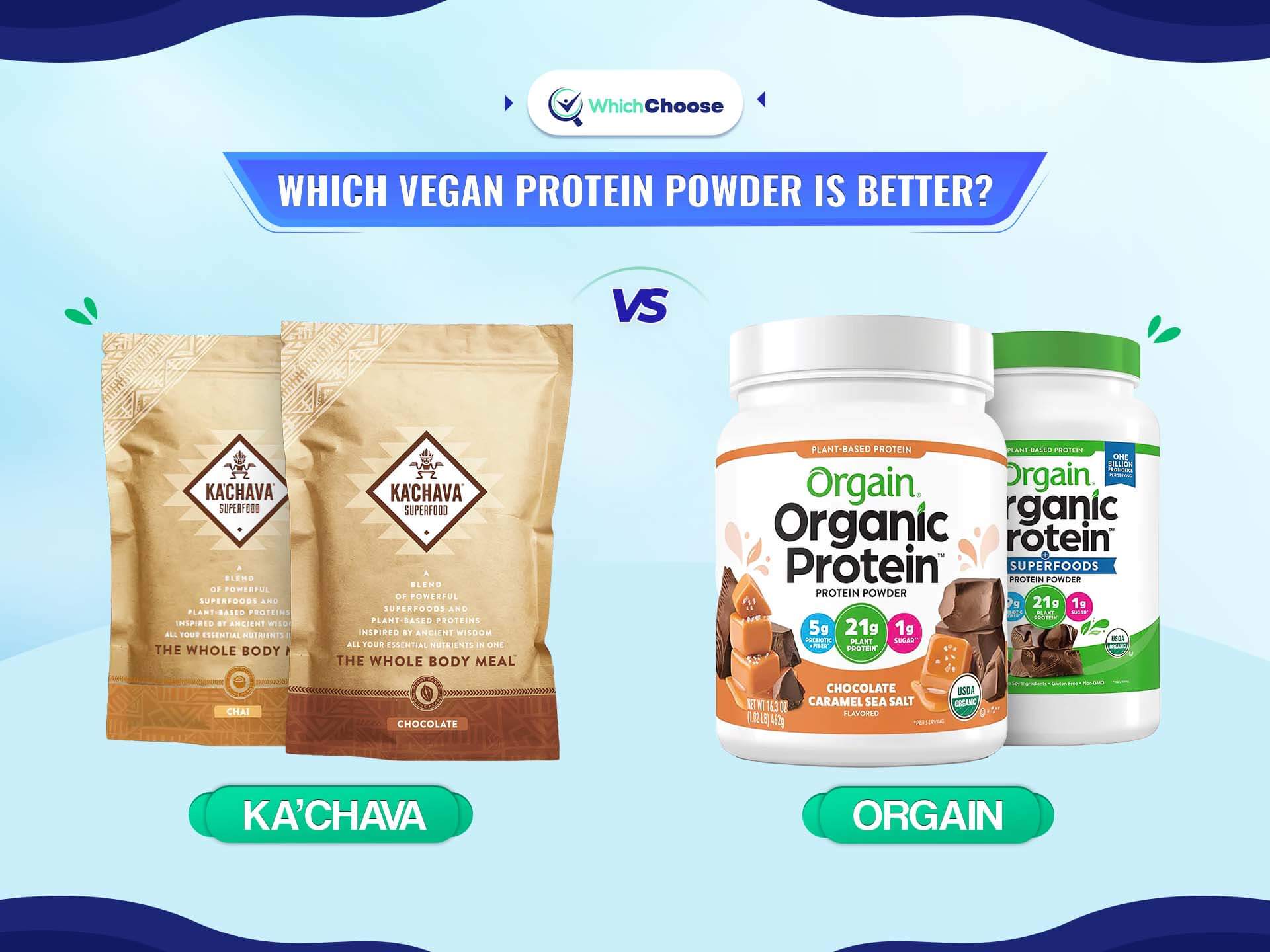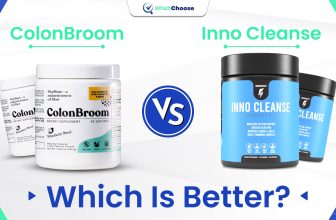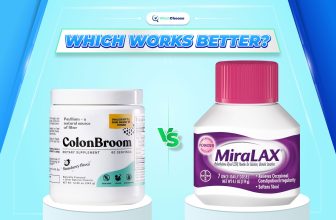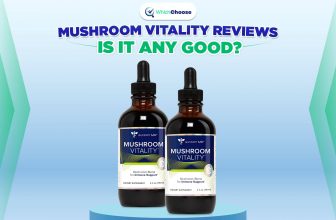Table of Contents
This post contains affiliate links. We earn an affiliate commission when you click our links to purchase products. It has no added cost to you.
Vegan protein is extremely beneficial for human health. It provides a rich source of fiber that is vital in regulating the body’s function from the inside out. While you are looking for vegan protein supplements, you might stumble across KaChava vs Orgain. These two protein providers might share the same benefits, but only one is worth buying based on your specific needs. WhichChoose will make a comparison below.
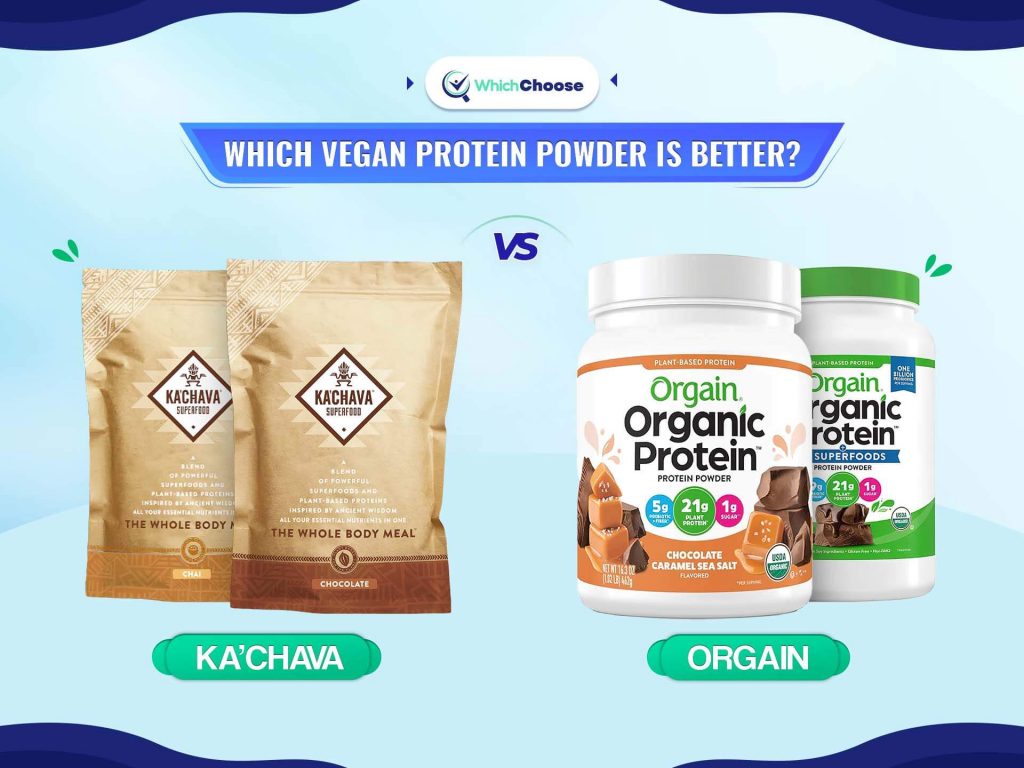
KaChava Vs Orgain: Introduction
25 g of protein
85 essential nutrients and superfoods
Five different flavors
Whole body meal
Vegan, gluten-free, and soy-free
Boosts and recovers muscles
Bolsters response to stress
Support weight management
21 g of protein
Superfoods included
Wide range of flavors
Vegan-free, gluten-free, and soy-free
Supports weight loss
Betters immune system
1.1. KaChava
KaChava comes as an organic superfood meal shakes with plant-based ingredients. It provides a great amount of vegan protein (25 g) among various essential nutrients for normal healthy growth.
With nature-sourced ingredients, it aims to improve the health of your gut, brain, muscles, skin, hair, and heart. Its protein blend especially provides plant-based nutrients from yellow peas, whole-grain brown rice, amaranth, sacha inchi, and quinoa. All-in-one supplement to support your overall health and wellness.
Also, KaChava offers abundant tastes with different flavors: vanilla, chocolate, chai, coconut acai, and matcha. Thus, people who want to use this super blend are able to consume it with different experiences based on their taste. KaChava can serve as a whole meal.
Dairy-free, gluten-free, and soy-free.
Vanilla flavor.
Replace a full meal.
Soy-free, dairy-free, and gluten-free.
Vegan.
Replace a full meal.
Vegan.
Match flavor.
Replace a full meal.
1.2. Orgain
Orgain is another brand that offers nutritional supplements with a good source of protein. Its product comes in different forms: powders, drinks, and bars. In this blog, we’re discussing powdered Orgain to be compared with its opponent — KaChava.
Unlike KaChava, Orgain cannot replace a full meal. However, it can be an excellent snack with 21 g of protein formulated in it. Its source of vegan protein primarily comes from organic pea, brown rice, and chia seeds.
The product comes in a wide range of flavors, including vanilla, chocolate, caramel, strawberries, etc. Therefore, Orgain users also have various taste options to go with.
In a nutshell, both supplements offer promising amounts of organic protein. And with just a quick overview, you can see that KaChava provides a higher dosage of protein which is extracted from more plant-based ingredients as well. As a result, that can be the first sign that you should give it a try.
Vegan-free, gluten-free
Favorite flavor
Vegan-free, gluten-free
Exclusive, new flavor
Nevertheless, how about the other nutrients? Do they contribute to your protein goals as well? Let’s clarify them in the next section.
KaChava Vs Orgain: Nutrition
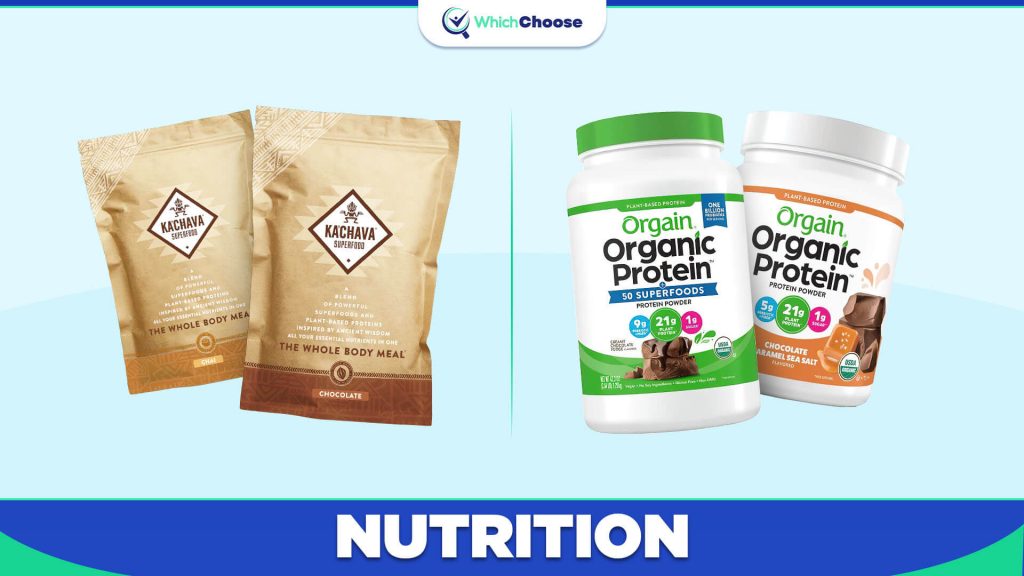
In terms of nutritional content, there isn’t much difference between Ka’Chava and Orgain. However, we must admit that Ka’Chava continues to excel.
| Nutrition | KaChava | Orgain |
| Calories | 240 g | 220 g |
| Protein | 25 g | 21 g |
| Sugar | 6 g | 1 g |
| Fat | 7 g | 5 g |
| Fiber | 9 g | 8 g |
| Cholesterol | 0 g | 0 g |
| Carbs | 24 g | 24 g |
| Superfoods | Yes | Yes |
| Artificial Sweeteners | No | No |
The most noticeable difference appears to be the difference in sugar grams. If you plan to use Ka’Chava, you can expect it to be sweeter than Orgain. However, each serving (60g for two scoops) contains only 1g of sugar. This sum is insignificant to warrant concern.
Orgain Vs. KaChava: Ingredients
3.1. KaChava
Ka’Chava vegan protein blend contains ingredients backed by science to show incredible effects on overall health. We’re breaking them down below.
- Yellow pea – the yellow pea protein is high in arginine, iron, and branched-chain amino acids. It’s especially essential for young men [1] for promoting muscle building, sensations of fullness, and heart health.
- Whole grain brown rice – this ingredient is the ultimate weapon of vegetarians and bodybuilders. Brown rice supports diabetes prevention, muscle recovery, digestion, absorption, weight management, etc.
- Sacha inchi – this plant provides a good source of protein with nine essential amino acids [2]. Sacha inchi also helps to lower your cholesterol and blood pressure.
- Amaranth – this gluten-free grain has a great deal of protein, fiber, and micronutrients. It has been proven to support weight loss and inflammatory reduction.
- Quinoa – as called a ‘complete protein’ and ‘the mother of all grains, Quinoa is an excellent protein provider. Like Sacha inchi, this grain provides 9 amino acids essential for the body. Additionally, this study [3] shows that daily intake of Quinoa can modify glucose response.
3.2. Orgain
Orgain’s and Ka’Chava protein blend shares yellow pea and brown rice as the two common ingredients. Besides, chia is the only ingredient in Orgain that you cannot find in KaChava.
Chia contains a large amount of dietary fiber, gluten-free protein, and omega-3 fatty acids. According to a study on the therapeutic effects of chia, this grain controls diabetes, improves the immune system, and reduces inflammation.
In summary, KaChava provides a diverse source of protein ingredients compared to Orgain. That perhaps contributes to the reason why KaChava has a higher dosage of protein.
To give you a better picture, we will break down the pros and cons in the next section. Keep scrolling.
Orgain Vs. KaChava: Pros And Cons
More diverse protein ingredients.
Higher dosage of protein.
Improves overall health.
Different available flavors (You’ll find at least one favorite flavor out of them).
Can replace a full meal.
Money-back guarantee.
You may not like its sweetness.
Its texture is a bit chalky.
Slightly sweet (anti-sugar users will love this).
Different flavor options to choose from.
Boosts overall wellness.
You can add it to many food recipes.
Cannot replace a full meal
KaChava Vs Orgain: Price
5.1. KaChava
The regular price for a one-time KaChava purchase is $69.95/bag for 15 servings. With one bag, it costs you $4.66/meal.
Once you become a buyer on its official website, you’ll get a 100% risk-free money-back guarantee within 30 days and phone/email support. You’re also involved in the brand’s loyalty points and rewards from the first order.
Replace a full meal.
Soy-free, dairy-free, and gluten-free.
5.2. Orgain
A one-time purchase of Orgain costs $29.99 for 20 servings. If you buy from the official website’s subscriptions, you can get free shipping on all orders.
Orgain Vs KaChava: Side Effects

6.1. Ka’Chava
According to customer reviews, we see that KaChava does cause some minor side effects: bloating, nausea, gas, and cramping. These reactions are not dangerous. In fact, it’s rare that you can experience them unless your stomach has had problems with fiber before.
6.2. Orgain
Both Orgain and KaChava are safe vegan protein providers to use. But like its opponent, Orgain might cause bloating, gas, cramping, and diarrhea. Some users also reported slight headaches during a few first servings.
KaChava vs Orgain – which is the better vegan protein provider? It’s clearly KaChava. Unless its price is a burden for your tight budget, you can go for the other option reluctantly. KaChava obviously provides a wealth of organic protein plus various essential nutrients your body needs. Most importantly, with just two scoops of KaChava power, you can have a whole meal with daily vital nutrients on the table.
All in all, both protein supplements are promising. But KaChava will be a perfect mate for your vegan goals. As a bottom line, WhichChoose hopes you have found valuable information in this KaChava vs Orgain review.
Science sources:
- [1] van den Driessche, J. J., Plat, J., & Mensink, R. P. (2018). Effects of superfoods on risk factors of metabolic syndrome: a systematic review of human intervention trials. Food & function, 9(4), 1944–1966. https://pubs.rsc.org/en/content/articlelanding/2018/FO/C7FO01792H
- [2] Goyal, Ankit & Tanwar, Beenu & Sihag, Manvesh & Sharma, Vivek. (2021). Sacha inchi (Plukenetia volubilis L.): An emerging source of nutrients, omega-3 fatty acid and phytochemicals. Volume 373, Part B, 2022, 131459, ISSN 0308-8146. https://www.sciencedirect.com/science/article/abs/pii/S0308814621024651
- [3] Li, L., Lietz, G., Bal, W., Watson, A., Morfey, B., & Seal, C. (2018). Effects of Quinoa (Chenopodium quinoa Willd.) Consumption on Markers of CVD Risk. Nutrients, 10(6), 777. https://www.mdpi.com/2072-6643/10/6/777
WhichChoose is the website products and services review that helps users in the world to find what the best is and shop easily.


